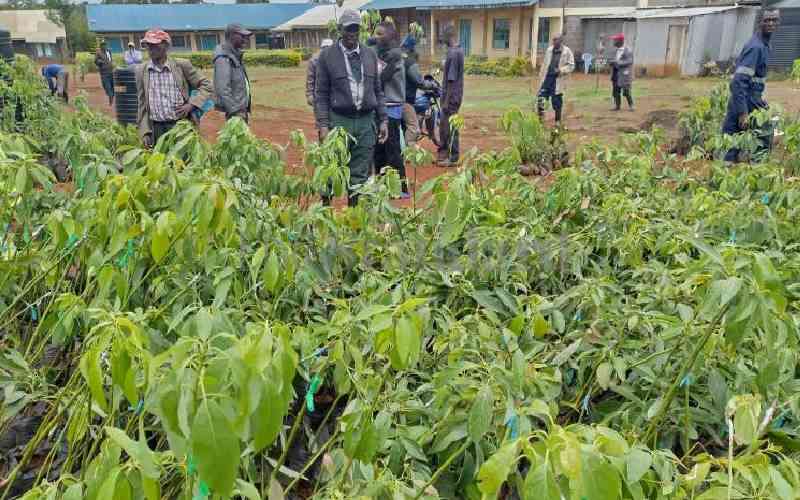BY HAROLD AYODO
Canopies of magnificent indigenous trees engulf us as we venture into the only local tropical rainforest.
The sounds of chirping birds soothe us as beautiful butterflies flutter by. Attracting birdwatchers from around the world, the forest is a living museum to unique and rare species of birds and butterflies.
Suddenly, clouds gathered over our entourage comprising Kenya Wildlife Service (KWS) officials and myself.
The trees are the main reason the area receives some of the highest rainfall (about 2,000mm) annually, according to meteorologists.
Rain falls mostly in the afternoon or early evenings and is often accompanied by lightning and thunderstorms. The temperature does not vary greatly throughout the year, with a mean of 15 C.
As we strolled deep inside the forest I was taken aback by the large patches where indigenous trees once stood. "The forest has for long been a generous supplier of firewood, building materials and medicinal plants to locals," says senior park warden Collins Omondi.
Logging and increased population threaten the flora and fauna in the forest.
Geologists say the forest is rich in rare minerals like the gold-bearing quartz and feldspar. The minerals are in demand in Europe and the Middle East and are used to make jewellery and hard stone carvings.
According to The Forest Cover and Forest Reserves in Kenya: Policy and Practice Report, the forest covers 240km2 with 40 km2 being densely populated.
Bedroom matters
The Government report warns that the forest could be completely destroyed within 20 years because of illegal human activities.
The story of the destruction of the only remnant in Kenya of the Guineo-Congolian forest started centuries ago. The great tropical rainforest once stretched across Central Africa before the climate became drier 10,000 years ago.
Kakamega Forest National Reserve deputy warden and tourism officer Pauline Okode says timber production threaten some species. Demand for firewood threatens Acacia abysinica and Croton microstachus with extinction.
And matters of the bedroom also endanger the forest as encroachers scramble for Mondia whytei (mukhovero) — a plant that boosts sex drives.
Stay informed. Subscribe to our newsletter
According to wildlife researchers, the last large carnivore sighted in the forest was a leopard in the Buyangu area in 1991.
 The Standard Group Plc is a
multi-media organization with investments in media platforms spanning newspaper
print operations, television, radio broadcasting, digital and online services. The
Standard Group is recognized as a leading multi-media house in Kenya with a key
influence in matters of national and international interest.
The Standard Group Plc is a
multi-media organization with investments in media platforms spanning newspaper
print operations, television, radio broadcasting, digital and online services. The
Standard Group is recognized as a leading multi-media house in Kenya with a key
influence in matters of national and international interest.
 The Standard Group Plc is a
multi-media organization with investments in media platforms spanning newspaper
print operations, television, radio broadcasting, digital and online services. The
Standard Group is recognized as a leading multi-media house in Kenya with a key
influence in matters of national and international interest.
The Standard Group Plc is a
multi-media organization with investments in media platforms spanning newspaper
print operations, television, radio broadcasting, digital and online services. The
Standard Group is recognized as a leading multi-media house in Kenya with a key
influence in matters of national and international interest.








